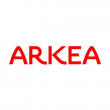New exchanges set out their stalls at TradeTech
The next generation of trading venues went head-to-head on the first day at TradeTech in London– each keen to present its model of how best to match buyers with sellers.
“This is all about liquidity,” said Alasdair Haynes, chief executive at Aquis Exchange. “In Europe we trade four or five times less value than the US, yet the population in Europe is larger and the GDP is the same. We need to grow the market. Changing the business model will allow for greater liquidity.”
Aquis is a pan-European trading venue that will use a subscription-based pricing model, which Haynes likens to a mobile telephone pricing package that charges users based on how much call time, text messages and data they use, or a TV package in which certain channels are included, based on what the user is willing to pay. Haynes argued that both television and mobile phone subscription models have seen significant growth in the last five years, despite the recession – and insisted that bringing an equivalent model to equities could help to prompt significant growth.
Other solutions include Christopher Gregory’s new sell-side negotiation venue, Squawker, which will provide a forum for brokers to interact anonymously with each other and trade large blocks of stock. Squawker will act essentially as a counterparty matching service, rather than matching actual orders, as traditional exchanges and MTFs have done.
“This is a discretionary service, in which participants express to us what they are interested in doing, and who they are willing to trade with,” he said. “Our model will provide clarity in an electronic environment and provide efficiencies. There is a gap in the market, because until now no venue has existed to bring the sell-side together to exchange blocks of stock efficiently.”
Meanwhile, former Chi-X Global founder Tony Mackay has established Market Bourse, a new trading venue that is based around the concept of social networking rules. On Market Bourse, participants will be able to specify who they want to trade with – and who they want to avoid. The venue is explicitly targeted at segments of the market, such as institutional investors, who feel disadvantaged by the current market infrastructure and may wish to avoid certain kinds of participant, such as high-frequency traders.
“We recognise that the market is made up of lots of different constituents,” said Mackay. “Over the last 10-15 years, hedge funds and HFTs have become much more active while exchanges have got rid of all the functionality. I perceive a change on the buy side. They are not happy with what’s going on. We are putting the power back on the buy-side. We are giving them choice about who they don’t want to interact with. If they don’t want to interact with HFT, they can do that and the broker is bound by that. On Market Bourse, users will flag who they want an order to interact with.”
Of the three new entrants, Squawker received the most praise from buy-side fellow panellists.
“Chris’ model is interesting,” said David Miller, head of trading at Invesco Perpetual. “If I choose a broker to trade a big block, Chris’ model will enable the broker I’ve chosen to find the other side. His model is the one that has immediate value for us. It’s about moving blocks from a buyer to a seller as efficiently as possible.”
Neil Smith, senior equity dealer, Europe at State Street Global Advisors, added that his firm typically finds the greatest difficulty in trading small and mid-cap stocks – a situation that has worsened as overall levels of liquidity in equity markets have declined.
“With the market liquidity dropping, it’s become really difficult moving those stocks around,” he said. “That’s where Squawker could add some real value to the buy side. However, my concern for the Squawker model is you’d need a lot of data to start your business. From the buy side, we are very cautious about the way we interact with new ideas. I hope Chris succeeds quickly, because I think he needs to.”
Squawker opened earlier this month; Aquis Exchange plans to open later this year, subject to regulatory approval.












































